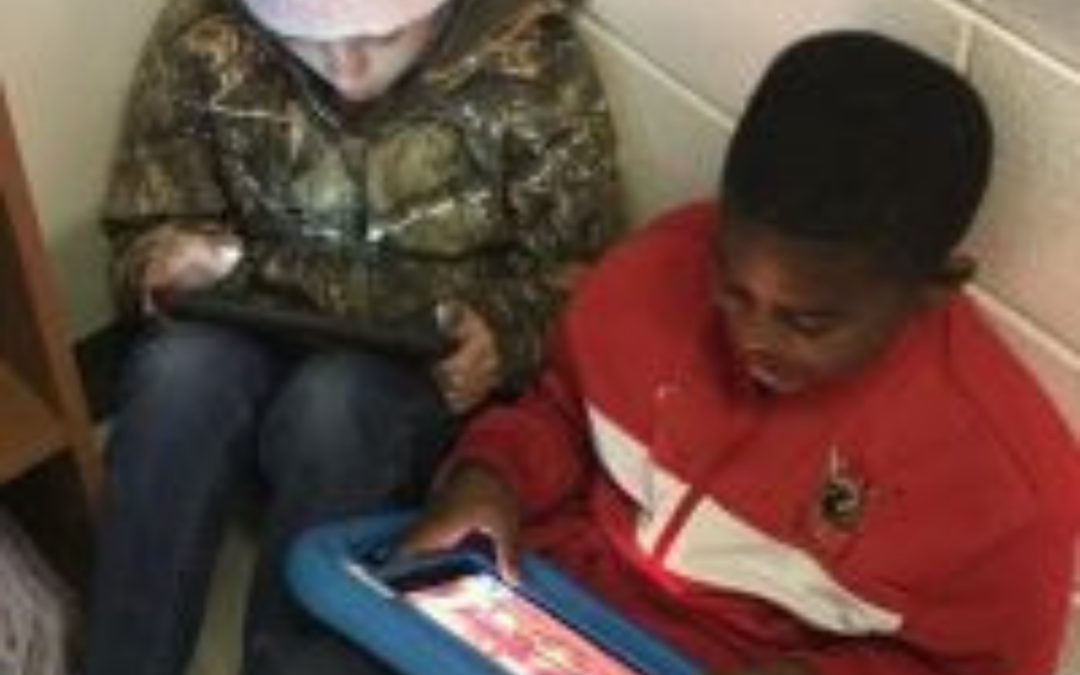By Robin Harkey
With budding interest and child-like anticipation, I stepped into Dudley Elementary to visit Jaime Schrade, VISD Education Foundation Grants for Great Ideas recipient, and her project, “Imagine the Fun with Facts.” In August of this year, Jaime received this award for $4,921 to benefit all K-5 students with the Nintendo-based math program from Imagine Learning.
In all honesty, I don’t know about you, but I’m not a big fan of math. There. I said it. I was the kind of child that never really liked it. It just always made me feel anxious, as if I was in an escape room and felt the fight-or-flight response of an amplified clock ticking in response to a bomb that was about to go off. My experience as a teacher and mom has also shown me that children seem to be polarized on the subject. Kids either like it, or they do not. There is not much middle ground.
Enter: Imagine Math Facts. This computer program grabs students and teaches them “math facts through a series of powerful, engaging activities on multiplication, division, addition, and subtraction – helping each child quickly gain math fact fluency along with a new interest in math.”
To see for myself and test out this theory, I asked Dudley Principal Steven Carroll to spontaneously pop into a 4th-grade classroom to see if any of the students wanted to get on the program. Without hesitation, the students, with hands raised high, said in rapid-fire, “me, me, me.” Jaime echoed this, previously, when asked what her favorite part of the project has been, saying “the kid’s reactions … they love it.” The response that resonated most with me was from a fifth-grader, who said he “never really liked math before.” Ding, ding, ding. I wanted to hand this kid a big trophy.
Schrade mentioned that “never before has VISD had a consistent math program across the district to help kids advance in math mastery.” According to the National Mathematics Advisory Board, math fluency (addition, subtraction, multiplication, and division facts) is the No. 1 critical foundation of algebra and more complex mathematical concepts. Jaime realized this need as well, having come from secondary education.
Since implementing the grant in September, Schrade runs reports weekly to analyze the number of lessons passed through checked out iPads and acts as a quality control check for schools and teachers to make sure everyone is utilizing the program accordingly. Besides monitoring, she has trained teachers, paraprofessionals, assistant principals, and the special education department, along with parents to get them on board. All VISD students can access the application from home through the district’s website.
Once back at the office, I had to experience Math Facts for myself. It was a blast to embody a green lizard human-like creature while navigating through antagonists such as a one-eyed monster, a red dragon, and hot lava through worlds such as the “Castle,” the “Ruins,” and the “Space Port.” I especially liked the “Force Field” that protects you from damage and the “Brain Power” gauge to track your mental energy. Time to add in a nutrition unit, I think! It’s time for some omega-3 fatty acids.
With all the hype and student receptivity, I look forward to seeing how the project progresses throughout the remaining school year, with a particular interest in its effect on math scores. Jaime’s project does more than hope for better performance; it is an intended target to help VISD and its students be “greater than” they’ve ever been before. And that’s no “less than” the truth.

